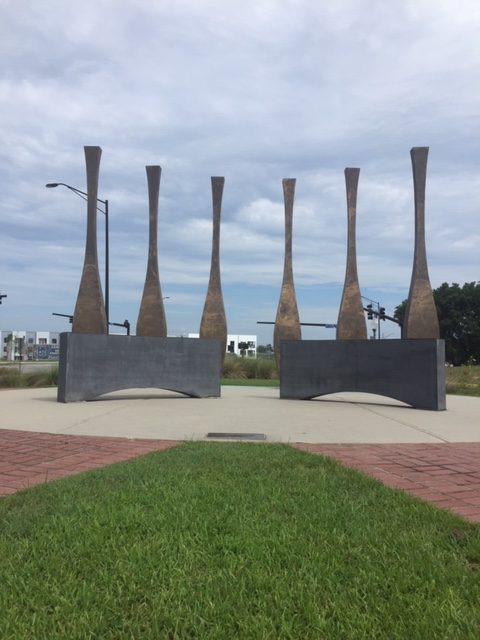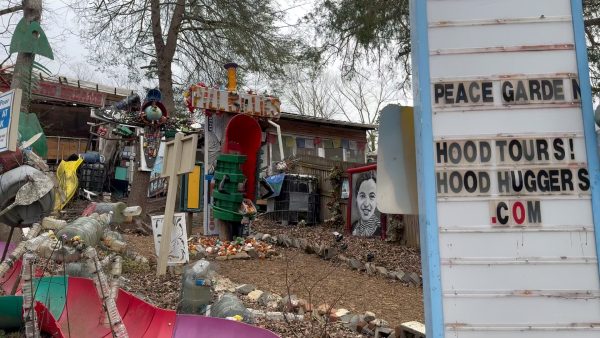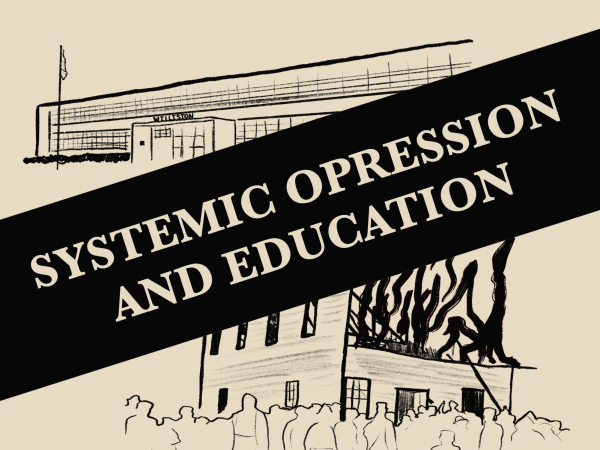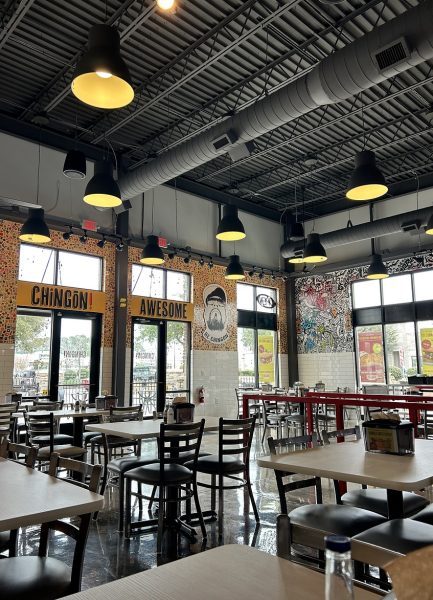Let’s talk about the Coup of 1898
At the brink of Third Street on a corner of neatly mown grass, just before the street melts into the Martin Luther King Jr. Parkway is the 1898 Memorial Park. It consists of six bronze paddle statues, each one averaging 16 feet in length.
The year it officially opened to the public was 2008, on Nov. 8. Obama was just elected as the 44th President of the United States of America.
To many, the unveiling of this monument and the election of America’s first Black president represented change. It seemed, 110 years after the Massacre of 1898, Wilmington was at last reaching for healing.
Four years ago, I moved from the remote farmland and forests of Wisconsin—where racism hides easily in stretches of fields and space—to the charming Southern hospitality of Wilmington, N.C. Here, the threads of racism are interwoven into the fabric of the community.
I had driven past the 1898 Memorial nearly every day without realizing what it was. Who would have known the innocuous corner of David and Third Street was a symbol about healing from white supremacy—I did not.
The subject of the coup, and the idea of possible reparations to the descendants of its victims, is long overdue for discussion. On September 15 at 6 p.m., you can join a live Zoom panel discussion with the creator of “Wilmington on Fire” and other members of Wilmington’s community.
I had not known anything about the Massacre of 1898 until the first week of June when the streets of cities across America began to bleed with voices in solidarity with George Floyd and against racial injustice.
The protests sparked a cultural upheaval and one by one, whitewashed histories began to surface with cries of outrage. Amongst these was Wilmington’s coup d’État of 1898, the only successful coup d’état in the history of the United States. The Coup d’État, also known as the Massacre of 1898 or as the Race Riot of 1898, resulted in the deaths of multiple Black citizens, the forced resignations of Republican government officials and the burning of a prominent Black-owned newspaper.
It does not seem like a piece of history you can gloss over so easily. Unless, of course, you have trouble coming to terms with what it implies.
As it is, the streets of Wilmington are named in honor of men who fought for slavery and white supremacy and the very men who incited the Coup of 1898 are painted in history books and in Wilmington folklore as heroes.
The city is itself a monument to its history, one that thrived at the expense of disadvantaged Black Americans.
Wilmington, essentially, was built by slavery. The key position of Wilmington’s ports enabled it to play an active role in the slave trade and by the 1800s, more than half of the population was Black.
In fact, most of the revered and iconic historical buildings that give the city its southern charm were built by Black tradesmen and slave labor. Not only did the enslaved mold, design and execute much of the beloved architecture in downtown Wilmington, they also worked tirelessly and for much cheaper than their white counterparts to fuel Wilmington’s primary means of success: trading.
After the Civil War, former slaves flocked to the city in search of work. As the economy of Wilmington grew, so did the freed Black population. There they comprised the majority of railway, lumber and naval trade laborers. As they gained footing, many Black laborers worked their way to craftsmen position and before long, Wilmington sported a thriving Black middle-class of businessmen and homeowners.
David Zucchino, author of the Pulitzer Prize-winning “Wilmington’s Lie”—a feat of journalistic reporting about the Massacre of 1898— reported, “By 1880, Wilmington would boast the highest proportion of black residents of any large Southern city—60 percent, compared with 44 percent in Atlanta, 27 percent in New Orleans, and 17 percent in Louisville.”
A fusion of two political parties, the Populists and Republicans, resulted in a bi-racial government that pushed against the racial restrictions of the Democratic Party (back then, it consisted of white supremacists). This gave the Black community power and a voice.
This period of Black prosperity in Wilmington is regarded as highly significant. In fact, some argue that Wilmington was more desegregated in the years leading up to 1898 than today.
Wilmington’s daily newspaper Star-News, and the oldest running publication in North Carolina, published an article on Jul. 12 titled “Can Wilmington again become ‘the place for black opportunity’?” , in which they compared the flourishment of Wilmington’s Black population in this era to the modern-day.
“I think that the current state of African Americans here has shown very little movement,” said Kevin Spears, a Wilmington City Council member, for the article. “I’m sure there is some evidence of growth but I’m certain that there is more evidence of immobility or some steps backward.”
The Massacre of 1898 was not a random attack. It was the climax of an elaborate conspiracy created by some of N.C.’s most influential white supremacists to take control over Wilmington’s then bi-racial government and keep Black Americans from prospering.
The key players and inciters of the massacre were renowned members of society who thrived in the aftermath. Some of the elite white men on this list include Hugh MacRae (whose descendants recently voted in favor of changing Hugh MacRae Park to Long Leaf Pine Park) and George Rountree.
Even the Star-News played a role in the massacre as an outlet for white supremacist propaganda.
After the violence and terrorism that ensued on Nov. 10, 1898 the population of Black residents in Wilmington dropped. In place of what had once been a city of opportunity were cruel Jim Crow laws and heightened segregation.
Research commissioned by the state revealed that a significant portion of Wilmington’s population has not recovered from the attack that took place more than 100 years ago.
The Coup was rewritten into history as a ‘race riot’ and was considered a taboo and touchy topic until more recent years. Silence proves again to be as complicit as the violence itself.












